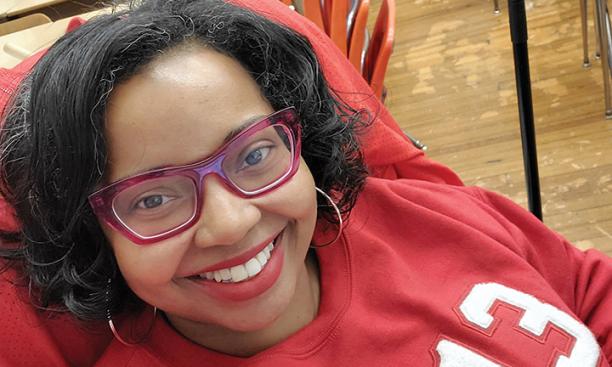
Jacklyn E. Bruce ’99 teaches modern world history at Thomas Jefferson High School in Richmond, Virginia.
A door adorned with airport codes, passport covers, luggage tags, and signage in many languages welcomed my students as they entered my classroom this year, a nod to the places we travel to throughout history. Eight years ago I became a “career switcher,” as those entering the ranks from other fields are called, and I now teach in the same public school district where I was educated. We teach a socioeconomically diverse population of 25,000 students, of whom 63 percent are black and 20 percent are Latino. About 55 percent qualify as “economically disadvantaged,” while 14 percent are English-language learners.
When I last saw my students, I ticked off historical highlights from the Black Death and the Renaissance through the Great Depression and the World Wars as we prepared for what we thought would be a temporary break. In my classes, I often cover moments of great concern, and I told my students to brace for temporary periods of despair and uncertainty alongside positive outcomes we would reflect upon down the road.
Nationwide as schools closed, glowing news stories from resource-heavy areas brimmed with tales of well-attended virtual classes. Less covered were the challenges faced in urban districts like mine (with even fewer articles about rural areas), where keeping students engaged requires a more holistic approach. I can provide organization, routines, and supplies, including a Chromebook cart and a dedicated Wi-Fi network, while in my classroom. Dispersed at home, our students want to learn, but some lack the resources they need, highlighting how disparities in experiences are often exacerbated by inequality. One cannot reach every child virtually if they are not all connected.
When spaces that offer public Wi-Fi closed, including local libraries, our families also had to address disruptions in employment, housing, transportation, food stability, and safety. Eviction moratoriums, daily food-distribution centers, a program providing free Chromebooks and hotspots, and statewide televised lessons are some of the ways these issues continue to be addressed. My colleagues and I put together a patchwork of emails, social-media posts, phone calls, virtual meetings, and resources sent through remote-learning channels to ensure that every student receives support. I even found myself posting lessons and updates from my cell phone, which became my lifeline after I moved into a new home where I was temporarily without Wi-Fi.
I write this in late April, and we are posting grades to close out the third marking period. Standardized testing has been waived, and students are completing online modules at their own pace. The heartbreak of not being able to say a proper goodbye to my students as they forgo high school rites of passage is strong. I miss greeting students who popped in just to say hi and congratulating students on milestones large and small. I will miss seeing my seniors walk across the stage at graduation and their announcements of the paths they plan to take. History has taught us many great lessons about resilience in times of disruption. I hope that we continue to learn from them.
PAW reached out to alumni who are on the front lines of the COVID-19 crisis or are affected by it in different ways. Read their essays here. Write to us at paw@princeton.edu with your own story.
